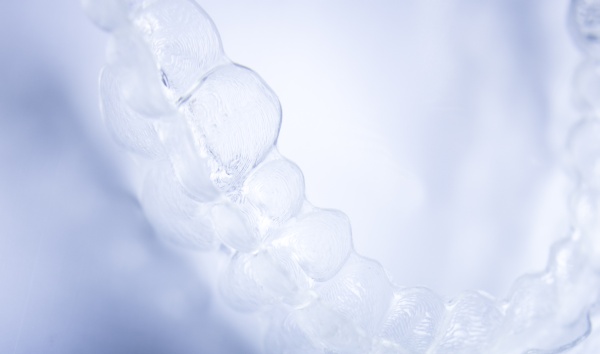Are Clear Aligners and Invisalign® the Same?

One of the leading procedures that dentists recommend for people to get straight, gap-free teeth is the Invisalign® treatment. However, there are other options for getting straight teeth. If a person will be a good candidate for Invisalign will depend on how severe the gaps, crowding and crooked teeth are.
Information about Invisalign
The following are a few general questions about Invisalign that are common for people considering this teeth-straightening option.
Is Invisalign invisible?
Although they are not completely invisible, the Invisalign trays are clear. When a person is wearing them, no one will be the wiser. Most people make the comment that it was not until their teeth became straighter over the time of the treatment that people began noticing.
Because Invisalign does not use any wires or metal fasteners, there is no chance of a wire popping loose and damaging the gums or cheeks. That means not showing off a face of metal, while also getting your teeth fixed.
Does Invisalign work as well as metal braces?
Of course, when people think about getting their teeth straightened, the daunting idea of the traditional metal braces pop into their heads. However, with Invisalign, this is a thing of the past.
The Invisalign treatment typically takes between 12 and 18 months, which is much faster than traditional braces. Because each tray is custom-built for each patient, the amount of time it takes to complete treatment is reduced immensely.
Are clear aligners and Invisalign the same?
In short, Invisalign is a brand of clear aligners that are used to straighten teeth and remove any gaps that are present in the patient's teeth. The aligners are clear and cannot be noticed unless the wearer takes it out in front of people.
Although there are other brands, the results and continued advancement that the Invisalign treatment gets is no wonder. People typically go with Invisalign, one of the best and most trusted clear braces.
How do you clean Invisalign?
One of the points a patient's dentist will cover in-depth during the fitting and creation portion of the Invisalign treatment is that you should never brush your Invisalign trays with a toothbrush or toothpaste. Also, taking the trays out when eating or playing sports is vital.
The cleaning process is very easy: A simple soak in the Invisalign cleaning mixture paired with a regular brushing and flossing schedule of the teeth will help keep the Invisalign performing its best and brightest.
If you follow these rules and wear the trays for the minimum of 20 hours per day, the Invisalign treatment will have you flashing a bright, straight and gap-free set of teeth in no time.
Have questions about how Invisalign works?
If you have any additional questions about Invisalign or are ready to talk to a dentist about how the Invisalign treatment would work for you, give our office a call. We are always ready to answer questions you may have and are always excited to guide and direct our patients in making the best decision for their teeth and oral health.
Request an appointment here: https://www.newyorkdentaloffice.com or call New York Dental Office at (212) 548-3261 for an appointment in our New York office.
Check out what others are saying about our services on Yelp: Read our Yelp reviews.
Recent Posts
People looking to straighten their smile are finding a flexible and discrete solution in clear aligners. These innovative appliances provide an alternative to traditional braces, making them popular among patients seeking effective treatment with minimal disruption to their daily lives. Clear aligners are custom-designed to meet patients' needs, ensuring precision and comfort.Clear aligners are transparent…
While some might believe visiting the dentist is only necessary for emergencies, routine dental care can be vital for oral health and overall wellness. There are a variety of benefits to seeing a dentist two or three times a year, no matter a patient’s stage of life. While regular brushing and flossing can help keep…
Good self-care habits ought to include time for routine dental care. From spending a few minutes each day on oral hygiene to visiting a general dentist throughout the year, taking care of the teeth and gums is an important part of personal health. Rather than leaving oral health to chance, implementing preventative dental care practices…
Routine dental care is vital for anyone striving to achieve optimum health. Dentists recommend two preventative dental visits per year, but much can happen between visits; therefore, it is crucial to get the most out of each appointment.Professional cleanings are an essential component of routine dental care and can remove plaque and tartar below the…



